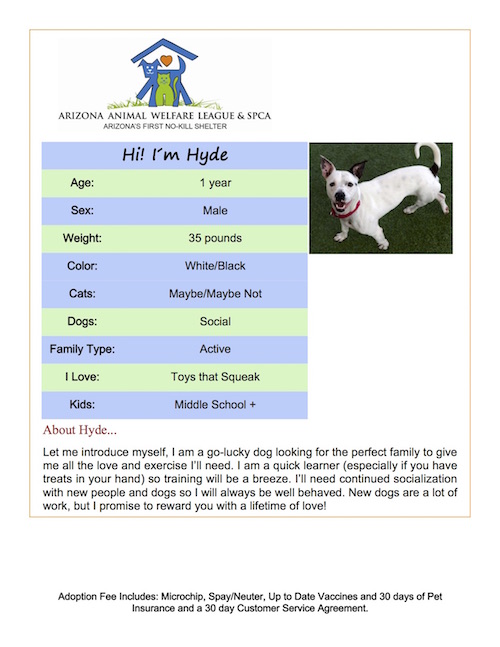The folks at the Arizona Welfare League (AAWL) know that every dog’s personality is different, shaped by its history, experiences, and temperament.
Following a study conducted by Arizona State University, this organization wanted to give all the dogs in their care a fair chance at winning over potential adopters with nothing but their good looks and shining personalities.

Michael Morefield, Marketing and Communications Manager at the AAWL, weighed in on the issue in an article by Life With Dogs.
“Breeds are an aspect of a dog but they don’t make up everything about that dog,” Morefield said in the story. “Their personality, their temperament, the life they have led so far before you meet them in the shelter… those life experiences really make up who that dog is more than who their parents were five years ago or what their color markings make you think they are as a breed. That’s really what makes up the pet you want to take home.”
As a matter of fact, it is suspected that many dogs in shelters aren’t even identified correctly in the first place, as expensive DNA tests would drain a shelter’s limited resources. If little history is known about a dog, the “breed” in which he is labeled is simply an educated guess.
For example, many shelter dogs fall into the “pit bull” category; and to make matters more confusing, the label “pit bull” is a vague umbrella term in and of itself.
“Dogs that were labeled as pit-bulls [for example] were staying at the shelter longer, while the dogs that looked just like them, labeled as a border collie or a Saint Bernard, were getting adopted in almost one-third the time,” said Morefield in the article.

Basically, with the labelling of any one of the most most misunderstood breeds, a dog’s chances of adoption start to plummet.
Three weeks ago, the AAWL removed all the labels from their kennels at the shelter, where first impressions count the most.
You might notice that the breeds are still listed online; the shelter feels that it’s important for potential adopters to still have access to this information, if they wish. “We don’t want people to think we are not being transparent, so it is easy to access on the website for them,” Morefield told iHeartDogs.

When asked if there’s been a change in adoption patterns, he noted that while the changes are still new, time will tell. “It would be hard to directly correlate just yet, but we had four of our longtimers adopted in the last six days, two of them being bully breeds.”
He added, “The cool part is that when people come and ask us about the breed, we get to talk to them about the dog and their personality, while also answering their question about what breed they are. in the past they might have seen the breed and walked off without ever talking to someone about how great the dog is.”
Here is an example of one of the new dog information cards:

What a novel idea. We hope these efforts are met with huge success–and that more shelters follow suit!
(h/t: Life With Dogs)
